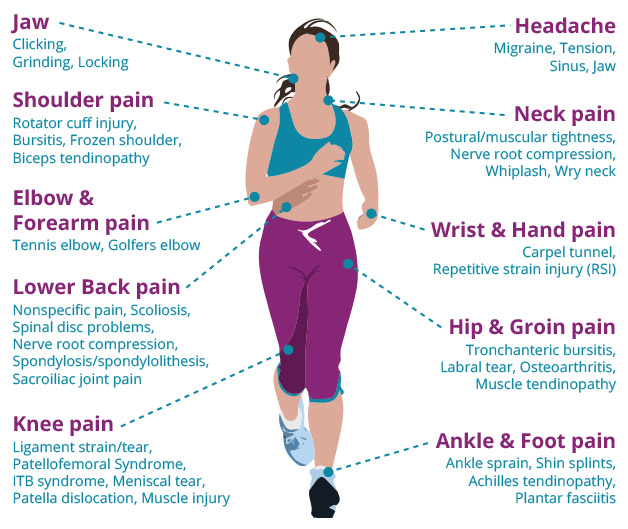ACL and PCL Ligament Tear / Injury
- Occurs in sporting injuries and causes instability and discomfort within the knee joint
- Commonly injured ligaments include Anterior Cruciate Ligament (ACL) and Medial Collateral Ligament (MCL)
- ACL tear is very common injury that requires surgery if you want to continue with most sports
- Posterior Cruciate Ligament (PCL) tear is not common, usually occurs as a dashboard injury during car accidents or when the leg is pushed back on the thigh
- Myotherapy aims to provide pre- operative strengthening as well as post- operative rehabilitation including improving range, strength and proprioception to return to sport as safely as possible
Medial and Lateral Collateral Ligament Tear
- Medial collateral knee ligaments are commonly injured when the knee is forced inwards
- Pain occurs on the inside of the knee
- Lateral collateral ligaments are not as commonly injured and often results from contact or a blow to the inside of the knee
- Pain occurs on the outside of the knee
- Treatment will concentrate on improving range and knee strength as well as agility
Patellofemoral Pain Syndrome (PFPS)
- This is the most common knee injury which often results from poor tracking of the knee cap due to incorrect hip and knee biomechanics
- Pain felt behind the kneecap
- Treatment will aim to balance the tracking of the knee during knee flexion as well as correct biomechanical errors
Iliotibial Band Friction Syndrome (ITBFS)
- This is a common injury among runners who train with downhill running
- The ITB is a taut band on the outside of the knee and is irritated with slight knee flexion
- Treatment will consist of soft tissue manual therapy as well as strengthening exercises to correct any biomechanical and running techniques
Meniscal Tear
- The menisci are the knee’s cushion, they help to absorb forces and improve congruency of the knee
- If they are torn on the outer third, there is good capacity to heal as there is adequate blood supply. If they are torn in the middle 2/3, you are likely to require surgery
- Myotherapy will advise knee stretches and strengthening exercises
Patella Dislocation
- Can occur in twisting movements of the knee or due to a direct blow
- Myotherapy aims to stabilise the knee cap by strengthening the quadriceps muscles
- If a second bout of dislocation occurs, surgical opinion is required
- Treatment will be required for strengthening the knee pre and post- op
Hamstring / Quadriceps Strain or Tear
- Muscle strains usually happen when a muscle is stretched beyond its limit, tearing the muscle fibres
- A similar injury occurs if there is a direct blow to the muscle. Muscle strains in the thigh can be quite painful
- A popping or snapping sensation may be heard as the muscle tears. Pain is sudden and may be severe, the injury may be tender to the touch, with visible bruising
- Muscle tears primarily occur during lengthening contraction of the muscle
- 3 grades of tears with different prognosis
- Treatment will aim to minimise scar tissue build up, improve range and strength in the muscle and return the patient back to sport and functional capacity as soon as possible
Hamstring / Quadriceps Muscle Contusion
- Known as a corked thigh and predominately occurs in contact sports
- There will be pain at the time of injury and the athlete is likely to have restricted movement in the muscle. Swelling and bruising may appear over time
- Thigh contusions are also graded 1, 2 or 3 depending on the severity
- It is essentially a bruising in the muscle and return to sport timelines depend on the severity
- Treatment will involve soft tissue manual therapy to increase the blood flow in the muscle as well as stretching and strengthening exercises
Calf Muscle Injury
- Pain that occurs in the calf muscle on the lower part of the leg often is the result of a pulled or torn calf muscle
- A calf strain is similar to an achilles tendon tear or rupture, but occurs higher up in the back of the leg
- You may hear a “pop” often described as a gun shot
- Sudden pain at the back of the calf, with swelling or bruising in the calf and difficulty walking properly or standing on your toes
- Calf injuries usually occur during acceleration or changes in direction
- Tears are graded into 3 grades with different prognosis for each
- Treatment will aim to minimise scar tissue build up, improve range and strength in the muscle and return the patient back to sport and functional capacity as soon as possible

